Key takeaways
- Storytelling in photography involves capturing emotions and context, turning simple images into meaningful narratives.
- Location plays a crucial role in visual storytelling, as it can shape the mood and atmosphere of a photograph.
- Techniques like capturing candid moments and experimenting with light and composition enhance the story being told in each image.
- Embracing imperfections and connecting with subjects are essential for creating authentic and impactful photography.
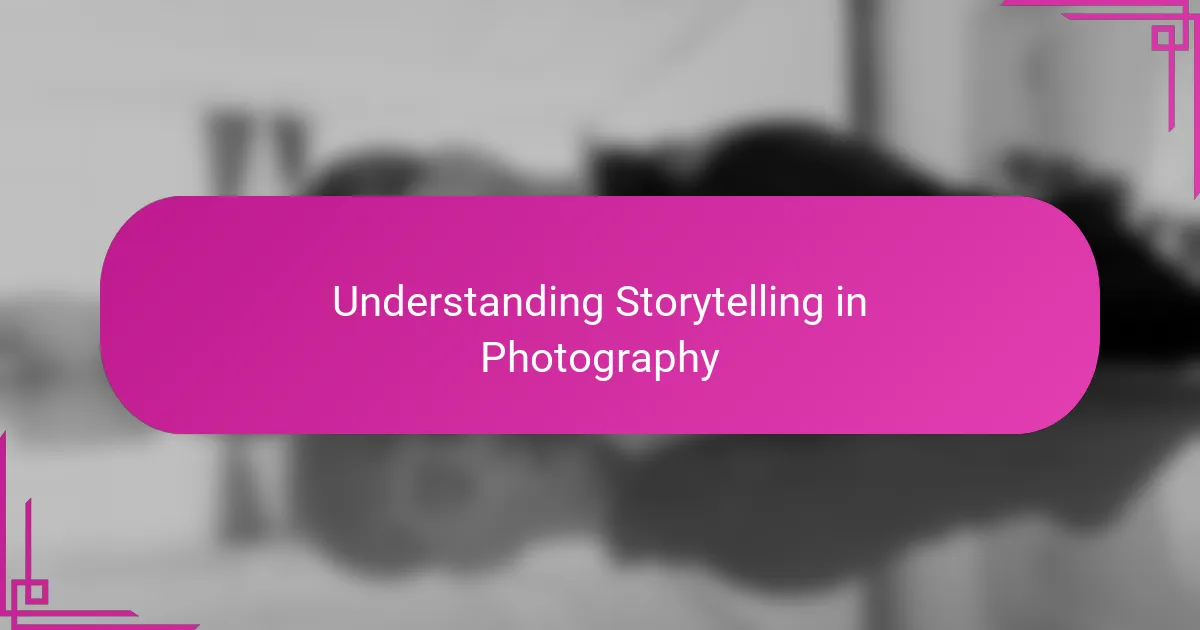
Understanding Storytelling in Photography
When I first started exploring photography in San Francisco, I quickly realized that storytelling was the heartbeat of every compelling image. It’s not just about capturing a moment but about conveying the emotions and context behind that moment. Have you ever looked at a photo and felt like you’re part of the scene? That’s the power of storytelling through photography.
To me, storytelling in photography means looking beyond the obvious and discovering the subtle details that give a picture its soul. In San Francisco’s vibrant streets, I found that a single frame could narrate a thousand untold stories—whether it was the weathered face of a street musician or the glint of sunlight on a foggy skyline. How often do we pause to truly see these layers?
Understanding this deepened my connection with my subjects and made me more patient with my craft. Storytelling forces you to ask questions: What am I trying to say here? What feeling do I want to evoke? These questions shape how I compose and capture my images, transforming simple photographs into meaningful stories.
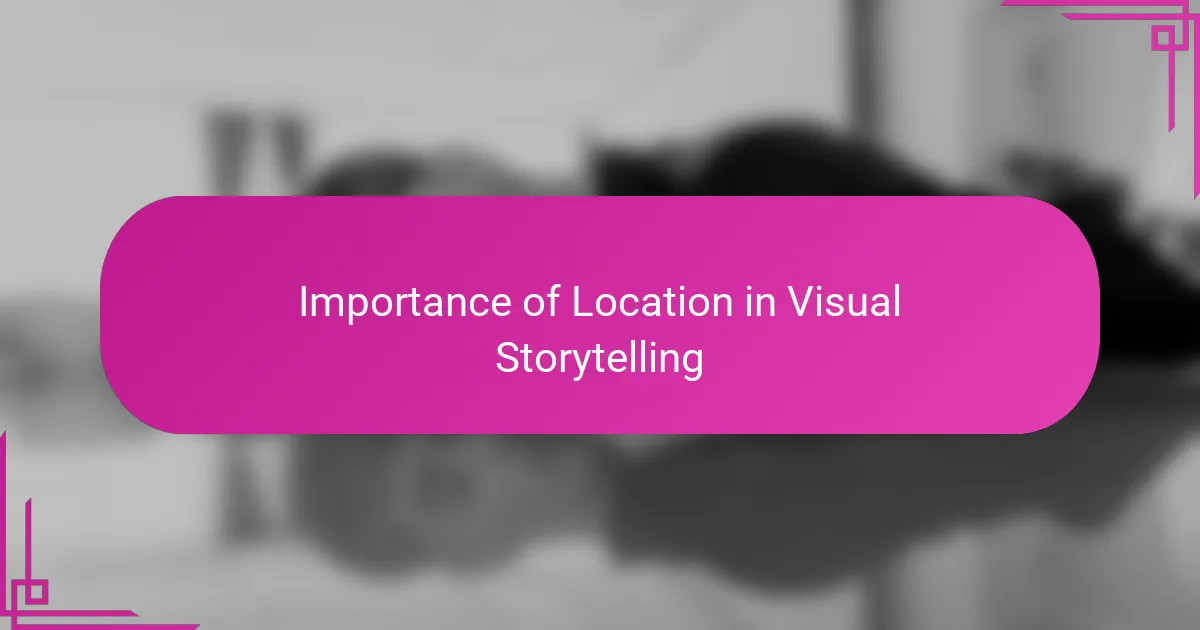
Importance of Location in Visual Storytelling
Location isn’t just a backdrop; it’s a character in the story I tell through my lens. Walking through San Francisco’s diverse neighborhoods, I noticed how each place carries its own mood and history, shaping the narrative my photos convey. Have you ever felt how a location’s vibe seeps into an image, making it unforgettable?
I remember photographing at the edge of the Embarcadero during sunset—the golden light reflecting off the water added warmth and hope to the portrait I was capturing. Without that setting, the story would have lost its emotional punch. It made me realize how crucial location is to not only frame a subject but to infuse the story with atmosphere.
Sometimes, I find the best stories unfold when I step into a space I’m unfamiliar with. The city’s iconic landmarks provide immediate context, but it’s the hidden corners and unexpected scenes that surprise me most. Isn’t it fascinating how a location can spark new perspectives and deepen the story you thought you were telling?
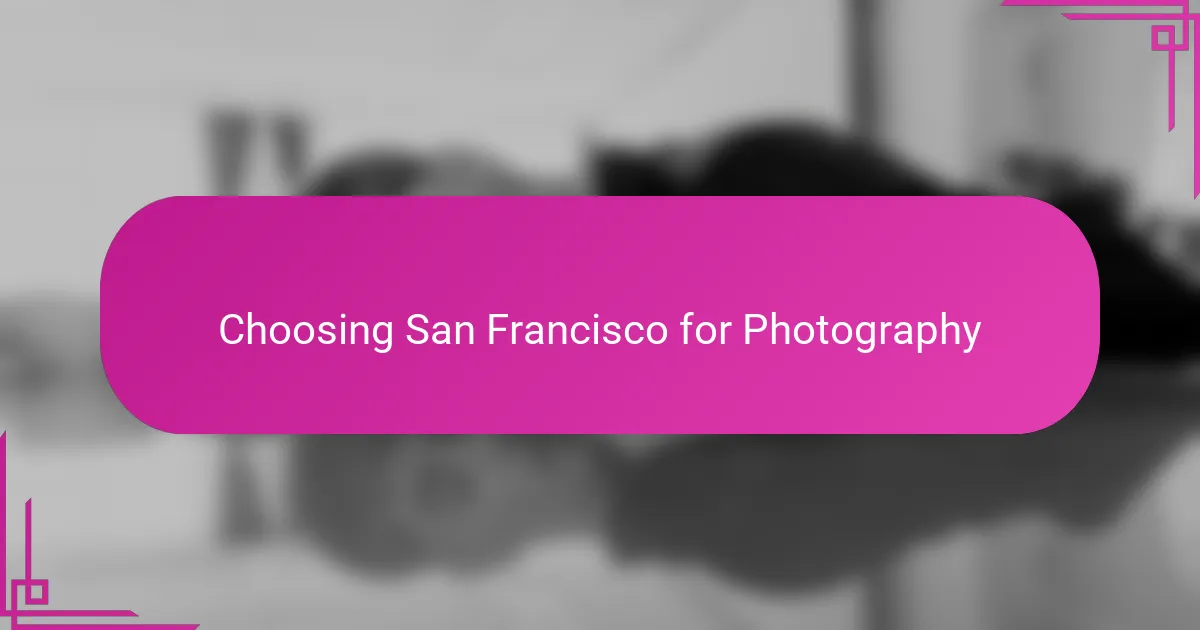
Choosing San Francisco for Photography
Choosing San Francisco for photography felt natural to me because of its incredible visual diversity. From the fog rolling over the Golden Gate Bridge to the colorful murals in the Mission District, every corner seemed to offer a fresh canvas. Have you ever stood somewhere and just felt the city whisper stories through its streets? That’s exactly what I experienced here.
The city’s blend of historic charm and modern vibrancy constantly pushes me to experiment with different styles. I recall shooting early morning light spilling across the Painted Ladies, where the contrast between old architecture and new life created a powerful story all on its own. How often does a single place inspire you to see the world differently through your lens?
What really convinced me to focus my storytelling efforts in San Francisco was how the city constantly challenges me to connect emotionally with my subjects. Whether capturing candid moments at Fisherman’s Wharf or quiet reflections in a foggy park, I find the environment here invites a deeper level of engagement. Isn’t that the ultimate goal of photography—to create not just pictures, but meaningful experiences?
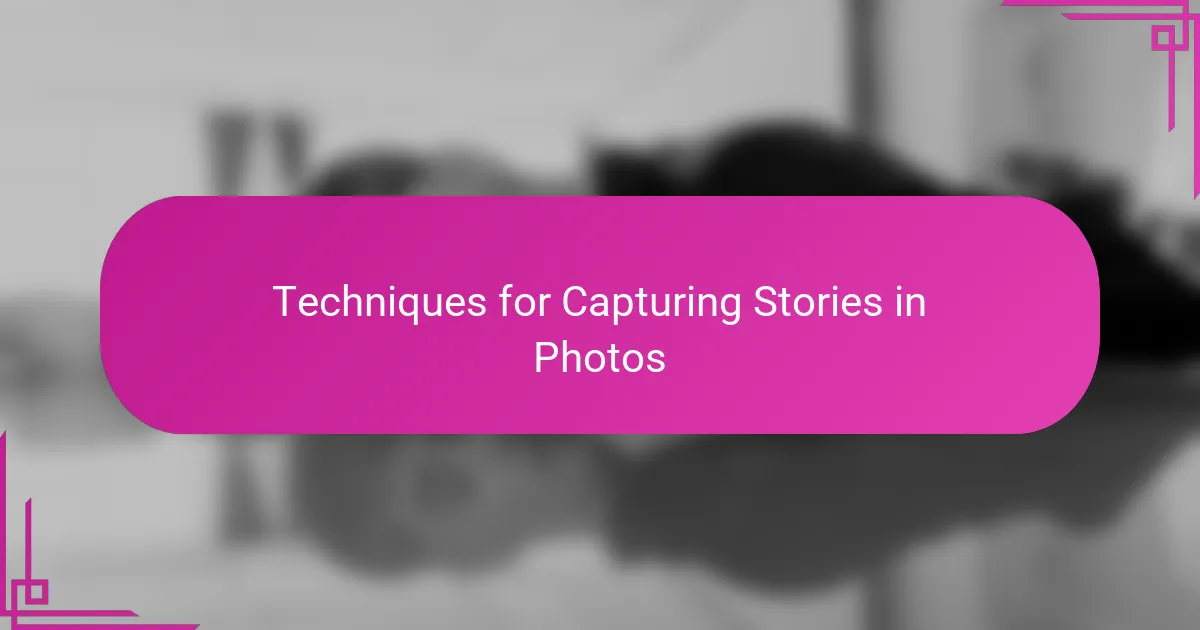
Techniques for Capturing Stories in Photos
One technique I rely on is capturing candid moments that reveal genuine emotions. I’ve found that when people aren’t aware of the camera, their true stories come through naturally. Have you noticed how an unguarded smile or a fleeting glance can say so much more than a posed expression?
Another approach I often use involves playing with light and shadow to enhance the mood. In San Francisco’s ever-changing weather, a shaft of sunlight breaking through fog can turn an ordinary scene into something magical and narrative-rich. It makes me wonder—how often do we consider lighting as a storyteller itself?
Framing and composition also guide the story within a photo. I’ve discovered that placing a subject off-center or including background elements that complement the main focus can transform a simple snapshot into a layered story. How do you decide what to include or exclude when capturing a story through your lens?
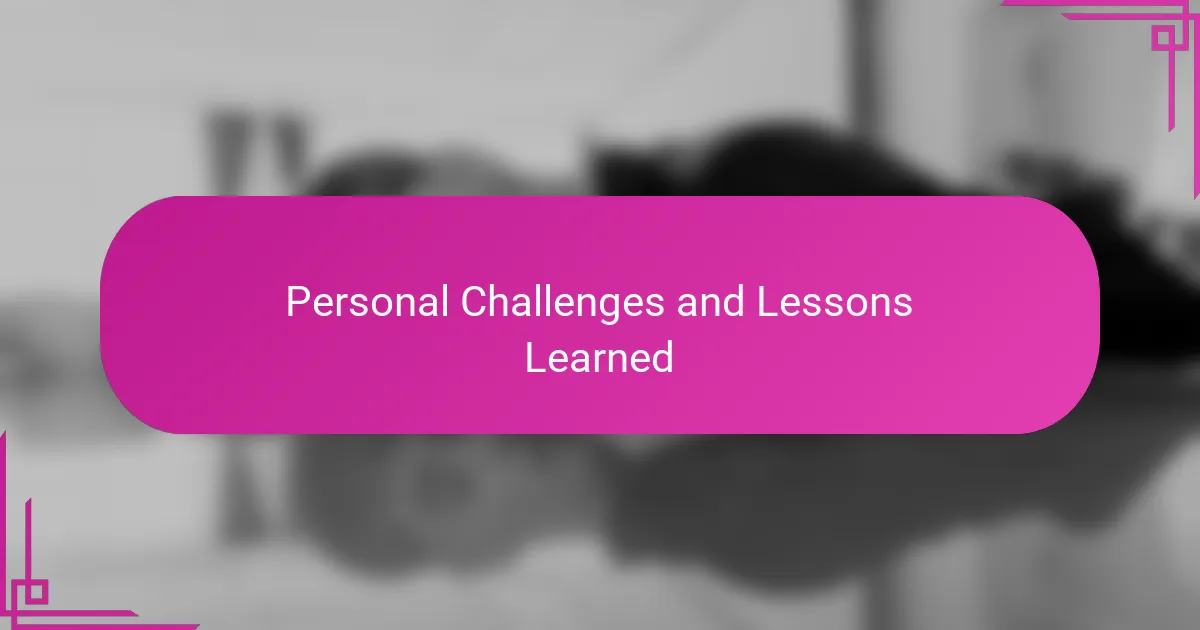
Personal Challenges and Lessons Learned
At times, I struggled to balance my urge to capture everything with the need to focus on the core story. I remember wandering the busy streets of Chinatown, overwhelmed by vibrant scenes everywhere, yet unsure where to point my lens. Have you ever felt that tension between wanting to document it all and telling a clear story? That moment taught me the importance of editing both my shots and my vision.
I also faced challenges communicating with my subjects. Some were hesitant or distracted, making it hard to capture authentic expressions. It took patience and sometimes a little humor to break the ice—and when it worked, the images felt much more alive. Isn’t it fascinating how storytelling in photography is as much about connection as it is about technique?
One lesson that stuck with me was embracing imperfections. Early on, I was frustrated by blurry shots or imperfect lighting, but over time, I saw how these flaws could add rawness and honesty to the story. Have you ever noticed that sometimes the most powerful story isn’t perfect but real? This shifted how I approach each frame, reminding me that authenticity often outweighs perfection.
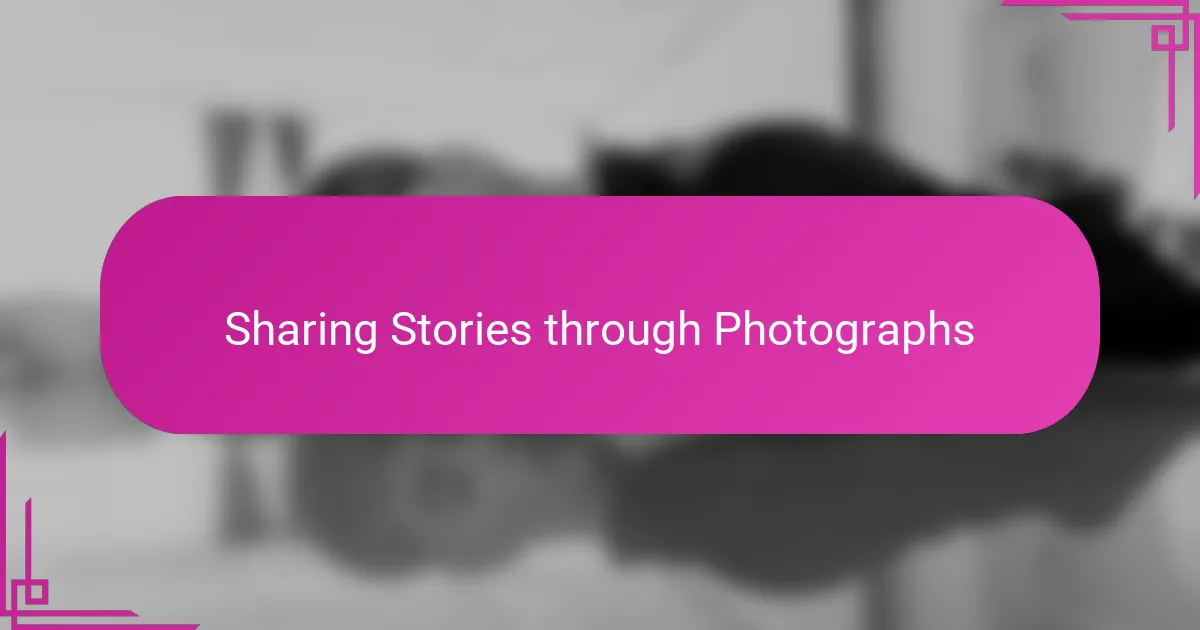
Sharing Stories through Photographs
Sharing stories through photographs means more than just snapping images; it’s about capturing moments that speak beyond words. I remember one afternoon in North Beach when a simple photo of an old couple sharing a laugh told me more about love and time than any sentence could express. Have you experienced how a single glance in a photo can open up a whole narrative?
Sometimes, it’s the smallest details that carry the heaviest weight in storytelling—like the worn hands of a craftsman or the shadow cast by the city’s iconic hills. These subtle hints invite viewers to step into the story and imagine what lies beyond the frame. Doesn’t that make photography feel almost like a conversation between the subject and the observer?
What strikes me most is how photos can preserve emotions that otherwise fade with time. When I look back at my San Francisco photos, I’m flooded with the atmosphere—the sounds, the smells, the fleeting moments—that words alone could never capture. Isn’t that why we connect so deeply with photographs—they hold stories that live long after the shutter clicks?